Photothermal hydrogel platform for prevention of post-surgical tumor recurrence and improving breast reconstruction
- PMID: 34620160
- PMCID: PMC8499550
- DOI: 10.1186/s12951-021-01041-w
Photothermal hydrogel platform for prevention of post-surgical tumor recurrence and improving breast reconstruction
Abstract
Background: As one of the leading threats for health among women worldwide, breast cancer has high morbidity and mortality. Surgical resection is the major clinical intervention for primary breast tumor, nevertheless high local recurrence risk and breast tissue defect remain two main clinical dilemmas, seriously affecting survival and quality of life of patients.
Experimental: We developed a thermoresponsive and injectable hybrid hydrogel platform (IR820/Mgel) by integration of co-loaded porous microspheres (MPs) and IR820 for preventing postoperative recurrence of breast cancer via photothermal therapy and promoting subsequent breast reconstruction.
Results: Our results suggested that IR820/Mgel could quickly heated to more than 50.0 ℃ under NIR irradiation, enabling killing effect on 4T1 cells in vitro and prevention effect on post-surgical tumor recurrence in vivo. In addition, the hydrogel platform was promising for its minimal invasion and capability of filling irregularly shaped defects after surgery, and the encapsulated MPs could help to increase the strength of gel to realize a long-term in situ function in vivo, and promoted the attachment and anchorage property of normal breast cells and adipose stem cells.
Conclusions: This photothermal hydrogel platform provides a practice paradigm for preventing locally recurrence of breast cancer and a potential option for reconstruction of breast defects.
Keywords: Breast cancer; Breast reconstruction; Hydrogel; Microspheres; Photothermal therapy.
© 2021. The Author(s).
Conflict of interest statement
There is no conflict of interest for all the authors.
Figures

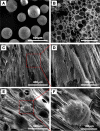

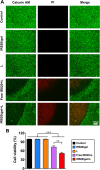

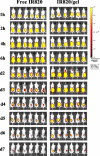


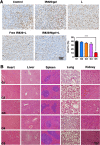
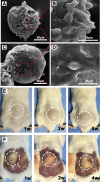
Similar articles
-
An injectable thermosensitive photothermal-network hydrogel for near-infrared-triggered drug delivery and synergistic photothermal-chemotherapy.Acta Biomater. 2019 Sep 15;96:281-294. doi: 10.1016/j.actbio.2019.07.024. Epub 2019 Jul 15. Acta Biomater. 2019. PMID: 31319202
-
Curcumin-Microsphere/IR820 Hybrid Bifunctional Hydrogels for In Situ Osteosarcoma Chemo-co-Thermal Therapy and Bone Reconstruction.ACS Appl Mater Interfaces. 2021 Jul 14;13(27):31542-31553. doi: 10.1021/acsami.1c08775. Epub 2021 Jun 30. ACS Appl Mater Interfaces. 2021. PMID: 34191477
-
Chitosan-based thermosensitive injectable hydrogel with hemostatic and antibacterial activity for preventing breast cancer postoperative recurrence and metastasis via chemo-photothermal therapy.Int J Biol Macromol. 2025 Feb;290:138930. doi: 10.1016/j.ijbiomac.2024.138930. Epub 2024 Dec 17. Int J Biol Macromol. 2025. PMID: 39701248
-
Breast cancer local recurrence after breast reconstruction.Handchir Mikrochir Plast Chir. 2008 Aug;40(4):219-24. doi: 10.1055/s-2008-1038599. Epub 2008 Aug 20. Handchir Mikrochir Plast Chir. 2008. PMID: 18716989 Review.
-
Recent advances of injectable in situ-forming hydrogels for preventing postoperative tumor recurrence.Drug Deliv. 2024 Dec;31(1):2400476. doi: 10.1080/10717544.2024.2400476. Epub 2024 Sep 10. Drug Deliv. 2024. PMID: 39252545 Free PMC article. Review.
Cited by
-
Advanced Hydrogels in Breast Cancer Therapy.Gels. 2024 Jul 19;10(7):479. doi: 10.3390/gels10070479. Gels. 2024. PMID: 39057502 Free PMC article. Review.
-
Enhanced postoperative cancer therapy by iron-based hydrogels.Biomater Res. 2022 May 23;26(1):19. doi: 10.1186/s40824-022-00268-4. Biomater Res. 2022. PMID: 35606838 Free PMC article. Review.
-
Polymer Gels: Classification and Recent Developments in Biomedical Applications.Gels. 2023 Feb 17;9(2):161. doi: 10.3390/gels9020161. Gels. 2023. PMID: 36826331 Free PMC article. Review.
-
Research Progress on Using Modified Hydrogel Coatings as Marine Antifouling Materials.Mar Drugs. 2024 Dec 3;22(12):546. doi: 10.3390/md22120546. Mar Drugs. 2024. PMID: 39728121 Free PMC article. Review.
-
Comprehensive evaluation of cell death-related genes as novel diagnostic biomarkers for breast cancer.Heliyon. 2023 Oct 28;9(11):e21341. doi: 10.1016/j.heliyon.2023.e21341. eCollection 2023 Nov. Heliyon. 2023. PMID: 38027811 Free PMC article.
References
-
- Schop SJ, Joosen MEM, Wolswijk T, Heuts EM, van der Hulst R, Piatkowski de Grzymala AA. Quality of life after autologous fat transfer additional to prosthetic breast reconstruction in women after breast surgery: a systematic review. Eur J Surg Onc. 2020;47:772–77. doi: 10.1016/j.ejso.2020.10.021. - DOI - PubMed
MeSH terms
Substances
Grants and funding
LinkOut - more resources
Full Text Sources
Medical
Research Materials
Miscellaneous

